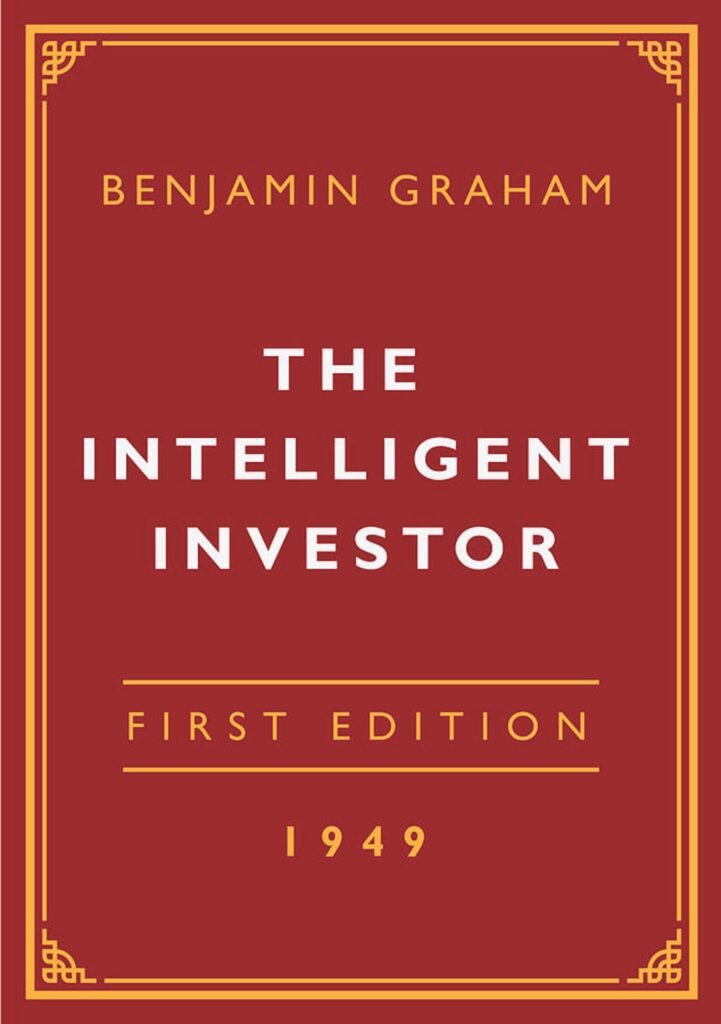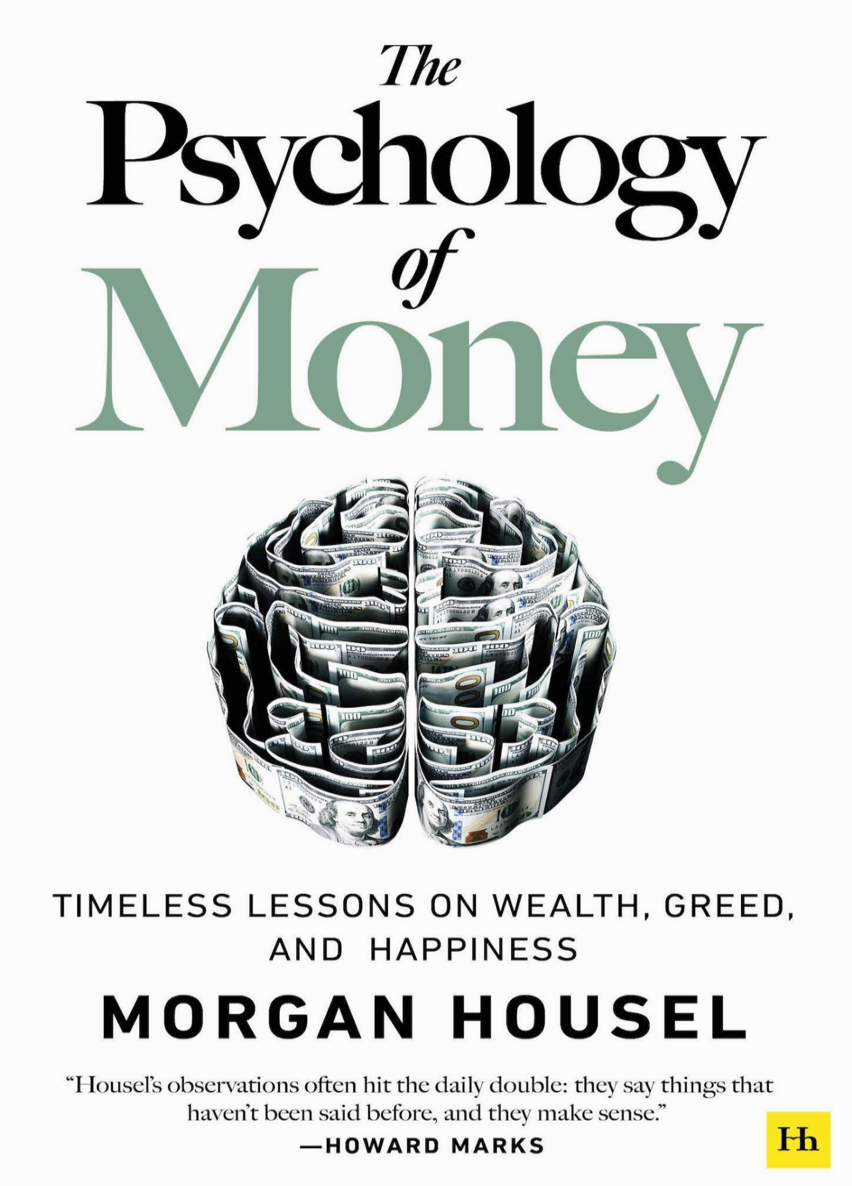
1. Why This Book Still Matters
Published in 1949 and updated through several editions (the latest with commentary by Jason Zweig), The Intelligent Investor is often called “the stock-market bible.” Its enduring reputation rests on three pillars:
- A clear, principles-based approach to valuing securities.
- A realistic assessment of human psychology and market behavior.
- Practical safeguards that protect ordinary people from Wall Street’s hazards.
Graham’s core claim is stark: intelligent investing is not about genius, forecasts, or inside tips. It is about disciplined, rational decision-making grounded in analysis and a margin of safety. Master those habits and the odds shift dramatically in your favor.
2. Investment vs. Speculation — Drawing the Bright Line
Graham begins by insisting on precise definitions:
• Investment:
- Thorough analysis of facts.
- Safety of principal.
- Adequate, though not extraordinary, return.
• Speculation:
Anything that fails to meet one or more of the above conditions.
Key implication: Speculation is not inherently immoral or futile. The danger arises when an investor mistakes speculation for investment—often by rationalizing hunches, rumors, or price momentum as “analysis.” Graham’s remedy is transparency: label each commitment “speculative” or “investment” before you act, and size positions accordingly.
3. The Concept of “Mr. Market” — Temperament Over Talent
Graham’s most famous allegory personifies the stock market as a moody partner who offers to buy or sell your shares each day at wildly shifting prices. You have three options:
- Accept Mr. Market’s price.
- Decline his offer.
- Ignore him.
You are never obliged to act. Your competitive edge lies not in predicting his next mood swing but in calmly exploiting his irrational offers when they favor you. This allegory crystallizes Graham’s central psychological lesson: market prices are there to serve you, not instruct you.
4. The Margin of Safety — The Ultimate Risk-Management Device
If Mr. Market describes the opportunity side of value investing, the margin of safety captures its defensive side. You build a margin by purchasing an asset at a significant discount to its conservatively estimated intrinsic value. The cushion absorbs:
• Analytical errors (wrong growth assumptions, underestimated liabilities).
• Random shocks (recession, litigation, technological change).
• Market panics (liquidity crunch, geopolitical fear).
Mathematically, if intrinsic value is VVV and your purchase price is PPP, margin of safety = (V−P)/V(V-P)/V(V−P)/V. Graham offers no single “safe” percentage, but he often points to 25-40 % discounts as meaningful.
5. Two Kinds of Intelligent Investors
Graham distinguishes between Defensive (Passive) and Enterprising (Active) investors, not by intellect but by time, interest, and temperament.
| Attribute | Defensive Investor | Enterprising Investor |
|---|---|---|
| Time commitment | Minimal | Significant |
| Primary goal | Capital preservation, simplicity | Superior after-tax returns |
| Typical allocation | 50/50 stocks & bonds (flex 25–75) | Concentrated in undervalued stocks, “special situations” |
| Research style | Screens for quality & diversification | Deep dives into balance sheets, catalysts |
| Suitable vehicles | Broad index funds, blue-chip dividend payers | Small-cap bargains, arbitrage, distressed debt |
Important: both approaches are “intelligent.” Trouble starts when a passive investor imitates an active strategy without the requisite effort, or when an active investor forgets to behave defensively when facts change.
6. The Defensive Investor in Practice
- Asset-allocation anchor: Keep between 25 % and 75 % in equities, rebalancing when the market skews the ratio beyond those bands.
- Quality screens for stocks (original 1972 edition criteria, updated with modern equivalents):
• Large, seasoned company (today: ≥ $10 bn market cap).
• At least 20 years of uninterrupted dividends.
• Earnings growth of ≥ ⅓ over the past decade.
• Current price ≤ 15× average earnings over past 3 years.
• Price ≤ 1.5× book value (or ≤ 22.5× combined with P/E using Graham’s formula). - Bond choices: Stick to high-grade corporates or Treasuries. Avoid high-yield (“junk”) unless you undertake enterprising research.
- Dollar-cost averaging: Commit a fixed sum at fixed intervals, dulling the emotional impact of volatility.
Outcome: returns roughly track market averages with lower stress and fewer catastrophic drawdowns.
7. The Enterprising Investor in Practice
The enterprising path demands significant hands-on research. Graham offers several tactics:
- Relatively Unpopular Large Companies: Well-known firms temporarily disliked for short-term issues; buy at depressed multiples.
- “Net-Net” Stocks: Companies trading below net current asset value (NCAV = current assets – total liabilities). Rare today but still spotted in micro-caps and certain foreign markets.
- Special Situations:
• Mergers & acquisitions (arbitrage spreads).
• Spin-offs.
• Liquidations.
• Bankruptcy reorganizations.
Thorough legal and financial analysis will often reveal mispriced securities. - Bonds & Preferreds in Reorganization: Senior securities can offer equity-like upside with bond-like downside.
- Control Situations: Accumulate a large enough stake to influence management. For professionals only; requires deep pockets.
Graham cautions: even if you can beat the market, the quest is justified only if it is enjoyable and you can keep emotions in check.
8. Valuation Fundamentals — Estimating Intrinsic Value
Graham does not give a one-size-fits-all formula but outlines a toolkit:
- Earnings Power: Normalize earnings over a full business cycle (typically 5–10 years).
- Asset Value: Adjust book value for hidden assets (real estate, mineral rights) and write down over-stated intangibles.
- Dividend Record: Stability and growth are proxies for earning power durability.
- Financial Strength: Look at current ratio, debt-to-equity, interest coverage.
- Qualitative Factors: Management integrity, industry outlook, competitive moat (though Graham used the term “franchise” less explicitly).
For a quick sanity check he offers the Graham Formula (1949 edition, later superseded):Intrinsic Value=EPS×(8.5+2g)\text{Intrinsic Value} = EPS \times (8.5 + 2g) Intrinsic Value=EPS×(8.5+2g)
where EPSEPSEPS = trailing twelve-month earnings per share, ggg = expected 5-year growth rate (%). Jason Zweig cautions that in modern markets this formula is best viewed as an initial screen, not a price target.
9. Dividend Policy — The Forgotten Variable
Graham, writing before widespread share-buyback programs, favored companies that paid substantial, consistent dividends. Dividends:
• Impose discipline on management cash usage.
• Provide tangible income independent of market quotes.
• Force investors to realize part of their return steadily, reducing reliance on capital gains.
Modern context: repurchases can be dividend equivalents if done below intrinsic value; otherwise they may destroy value. An intelligent investor must judge repurchase policy with the same scrutiny as dividends.
10. Inflation, Bonds, and “Real” Returns
Graham warned that bonds, while safer nominally, are exposed to purchasing-power risk. His suggestions:
- Diversify maturities: Ladder short- to intermediate-term bonds to limit duration exposure.
- Inflation-protected instruments: Today’s analog is TIPS.
- Equities as inflation hedges: Only if bought at reasonable prices—overpriced stocks may lag inflation once valuations compress.
Key stat: From 1900–1970 U.S. inflation averaged 2.5 % yet occasionally spiked > 10 %; Graham’s contemporaries who clung solely to long bonds suffered large real losses.
11. Market Fluctuations and Dollar-Cost Averaging
Rather than predict cycles, Graham prescribes:
• Trading the Range: If equities drop to < 25 % of portfolio, buy until 50 %; if they hit 75 %, sell back down.
• Dollar-Cost Averaging: Commit consistent dollars monthly/quarterly regardless of price. Over time, this buys more shares when prices are low, fewer when high, reducing average cost.
• Stay Humble: Never draw conclusions from short-term moves; valuations can remain irrational far longer than your timeline.
12. Behavioral Lessons — Psychology as Destiny
Graham’s quantitative tools work only if married to emotional discipline. Common pitfalls:
- Overconfidence: Mistaking luck for skill, leading to over-concentration.
- Loss Aversion: Refusing to sell losers, hoping to “get back to even.”
- Herding: Chasing hot sectors (Nifty Fifty, dot-coms, crypto) long after valuations justify.
- Recency Bias: Extrapolating the latest macro trend (inflation, interest rates) indefinitely.
Defenses:
• Write down a thesis before purchase, including sell triggers.
• Use checklists (margin of safety, debt ratios, dividend policy).
• Pre-commit to rebalancing rules so emotion cannot hijack decisions.
13. The Efficient-Market Debate — Graham vs. Modern Finance
Many misinterpret Graham as anti-EMH (Efficient Market Hypothesis). He concedes markets are efficient most of the time, yet insists price occasionally diverges from value in ways exploitable by disciplined investors. His evidence:
• Documented net-net bargains trading below liquidation value.
• Statistical studies (with Dodd, later by Fama-French) showing value stocks (low P/B, low P/E) outperform over long periods.
• Real-world success of value disciples (e.g., Buffett, Schloss, Ruane).
Lesson: The intelligent investor assumes markets are usually right but prepares for the moments they are spectacularly wrong.
14. Common Stocks for Defensive Investors — The 4-Point Checklist
- Adequate Size: Avoid tiny firms with limited resources.
- Strong Financial Condition: Current assets ≥ 2× current liabilities; long-term debt ≤ net current assets.
- Earnings Stability: Positive EPS each of past 10 years.
- Moderate Price:
• P/E ≤ 15× average 3-year EPS
• P/B ≤ 1.5× (or combined rule P/E × P/B ≤ 22.5).
Modern studies confirm portfolios built on these filters have beaten benchmarks historically, though patience is essential.
15. Special Situations — Advanced Value Catalysts
Graham dedicates an entire chapter to “strategies for the enterprising investor.” Classic examples:
• Merger Arbitrage: Purchase target stock below announced acquisition price; profit when deal closes. Risks: deal breaks, regulatory hurdles.
• Liquidations: Estimate remaining net asset value, deduct wind-down costs, buy at discount. Requires reading proxy statements and court filings.
• Spin-offs: Parent company splits off a subsidiary; forced selling by index funds creates mispricing in the new entity.
• Distressed Debt: Buy bonds of bankrupt firms at pennies; upside from recovery value or equity conversion post-reorg.
Each tactic demands specialized knowledge, but consistently applies Graham’s margin-of-safety principle.
16. Case Study — GEICO: The Small Company That Proved the Point
Graham’s partnership bought Government Employees Insurance Co. in 1948 at ~ 8× earnings. Within 25 years the stock had multiplied > 100×. Key drivers:
- Simple, understandable business (auto insurance to a niche market).
- Sustained underwriting profit and growth.
- Low combined ratio (claims + expenses).
- Acquisition price well below intrinsic value.
Note: later (mid-1970s) GEICO nearly collapsed due to reckless expansion—reminding investors that buying right is necessary but ongoing monitoring is equally vital.
17. The Role of Advisors — Friend, Foe, or Fee-Drain?
Graham is blunt: most professionals underperform indexes after fees. Yet advisors can still add value by:
• Behavioral coaching — deterring panic selling.
• Tax optimization — asset location, harvesting losses.
• Estate planning — trusts, beneficiary structures.
The intelligent investor hires help only when the benefit exceeds cost and never relinquishes final judgment.
18. Updating Graham for the 21st Century
- Index Funds: Graham anticipated them (“Group Investment Shares”). For defensive investors, a diversified low-cost index remains the gold standard.
- ETFs & Robo-Advisors: Useful implementation tools, but beware thematic / leveraged ETFs that drift into speculation.
- Buybacks vs. Dividends: Evaluate buyback execution price relative to intrinsic value.
- Intangible Assets: Tech firms’ value often resides in software, patents, network effects. Adjust book value analysis with qualitative moat assessment.
- Globalization: Screens should extend to international markets, where net-nets and low P/B bargains still appear.
Crucially, none of these evolutions invalidate Graham’s core triad: analysis, margin of safety, investor psychology.
19. Actionable Checklist — Before You Buy Any Stock
- Understand what the company does and how it makes money.
- Read at least 5 years of annual reports; focus on cash-flow statement.
- Calculate normalized earnings and book value; apply conservative multipliers.
- Inspect balance-sheet strength (liquidity, leverage).
- Identify growth runway and potential threats.
- Demand a margin of safety – at least 25 % below your intrinsic-value estimate.
- Write a one-paragraph “investment thesis” including exit criteria.
- Limit any single position to a pre-set % of portfolio (5–10 % for enterprising; ≤ 3 % for defensive).
- Re-evaluate quarterly or when material information emerges.
- Keep a decision journal to learn from mistakes.
Follow this rigor and you are practicing Graham’s method, not merely admiring it.
20. Concluding Insights
Benjamin Graham closes the book with a charge that resonates eight decades later:
“To achieve satisfactory results is easier than most people realize; to achieve superior results is harder than it looks.”
The implication:
• Satisfactory results (matching or modestly beating the market) are attainable through low-cost diversified funds, regular saving, and strict avoidance of speculative pitfalls.
• Superior results demand exceptional emotional control, relentless research, and a willingness to look foolish while valuations correct.
Both paths require the investor to treat market fluctuations as opportunities, not oracles; to insist on a margin of safety; and to measure success by the soundness of the process, not the excitement of the moment.
Final Word
This extended synopsis captures the spine of The Intelligent Investor, but Graham’s genius lies in the meticulous examples, historical tables, and subtle psychological observations that only the full text conveys. Highly recommended: buy or borrow the complete book, read it slowly, and revisit it whenever markets (or your emotions) veer off course. Your future self—and your portfolio—will thank you.
Highly recommended: This synopsis covers the main ideas, but the book’s stories, research, and depth are best experienced firsthand.
Buy and read the full book for a richer understanding and to transform your own relationship with money.


